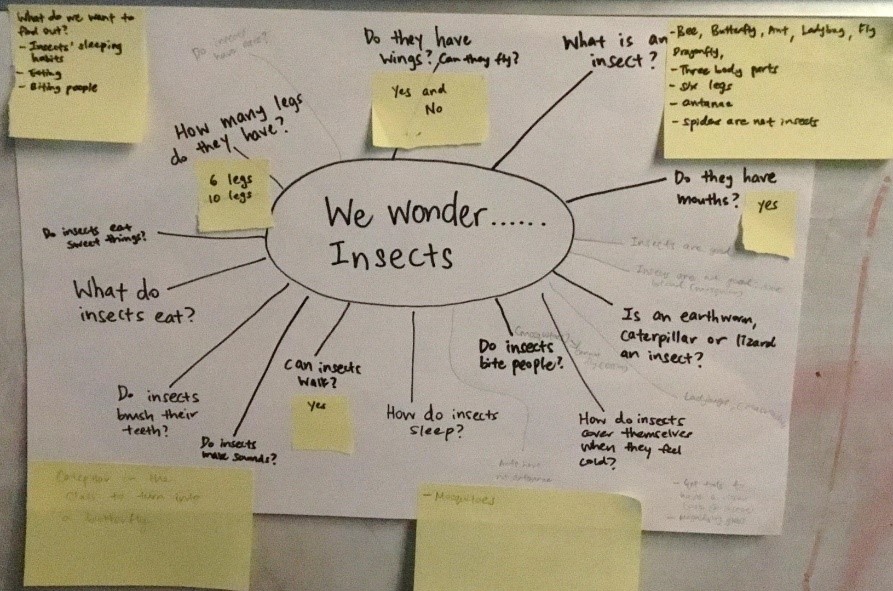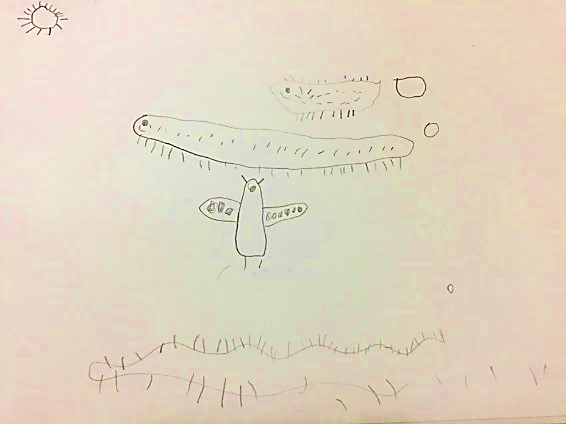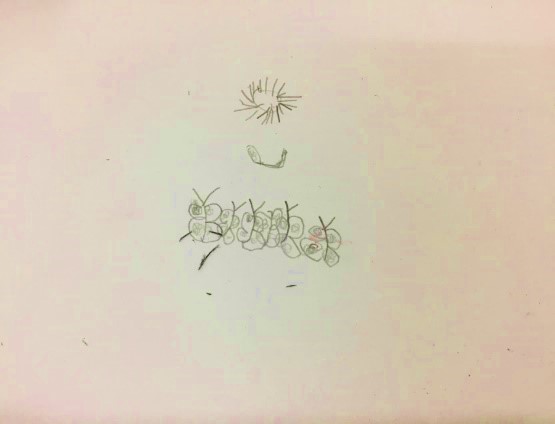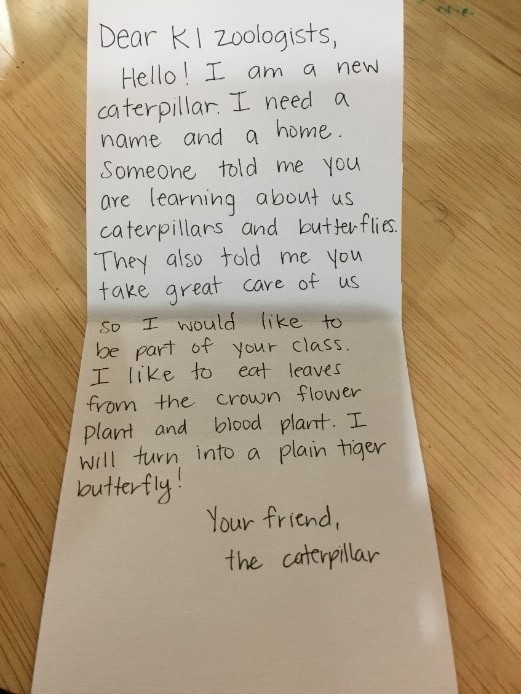Home >
Teaching & Learning Resources >
Activity Ideas >
Flora and Fauna >
An Inquiry on Caterpillars and Butterflies
"An Inquiry on Caterpillars and Butterflies" • EtonHouse Pre-school (Vanda)
1) Background
The K1 children started out exploring ideas related to insects. Different children contributed ideas based on their experiences and the teacher observed children’s particular interest in butterflies. They decided to scope the topic of “Insects” to exploring butterflies and caterpillars.
2) Objectives
Children were given opportunities to:
- Represent observation and information gathered in different ways (e.g. through drawing, labelling, modelling, writing and photography)
- Improve problem-solving skills
- Record/indicate a sequence of events in order
3) Stages
a) Initial stage
The teacher first asked the children to share their ideas about what they would like to find out about insects. The teacher helped to organise these ideas on a mind map to help children see possible connections between their different ideas.
 Teacher created a mind map to help children see connections between different ideas.
Teacher created a mind map to help children see connections between different ideas.
While doing so, the teacher observed that children presented a keen interest in butterflies specifically.

|

|
|---|---|
| “This is the caterpillar and cocoon. This is the butterfly. Caterpillar has 24 legs.” Isaac |
“The caterpillar becomes a butterfly. She flies in the sky. When she goes back home, she turns into a caterpillar again.” Su Rui |
When the teacher made this observation, she decided to modify her initial plans of focusing on insects to leverage children’s interest in butterflies. This allowed for connections to be made between children’s interests and new learning and kept the children excited about embarking on the inquiry.
This simple mind mapping activity also helped the teacher understand what children already knew so that she can make connections between their prior knowledge and their new learning experiences.
b) Main inquiry
Children found caterpillars in their garden and brought them to the centre to observe them. This process of observation continued over time, allowing children to apply observational and recording skills as they observed and recorded how the caterpillars turned into butterflies. Children were encouraged to document the growth of the caterpillars in a daily journal. They were invited to draw and write down their observations as they took notice of the caterpillars’ changes daily. Invented spelling was used as they explored how to record their observations in writing. They used a calendar to predict the number of days it took for a caterpillar to turn into a chrysalis and then into a butterfly. The calendar was also used to help the children in counting the days and weeks within a month. Through this process of observation and documentation, the children learnt about the life cycle of a butterfly.
The children were also given opportunities to communicate their findings with their peers and parents in class and at home. This process provided a platform to develop children in different learning areas such as Discovery of the World, Language and Literacy, and Numeracy. It also allowed the children to make meaningful connections across different learning areas.
Unfortunately, during the process of inquiry, three caterpillars died. The children had to cope with this unexpected loss. Through intentional questioning, the children were prompted to think more deeply to solve problems like how to prevent more caterpillars from dying. Some question prompts the teachers used included- “Why do you think some of the caterpillars died?”, “How can you help to ensure the other caterpillars’ stay healthy?” The teacher also made use of this authentic experience to help children understand death, grief and sadness as they grappled with these difficult concepts. They displayed love for these little creatures and shared how they would want to bid them farewell with a proper burial ceremony. The children also wrote messages and chose a song to be played in the background as they buried the dead caterpillars in the garden. Teachers built on this authentic experience to help children develop social and emotional competencies such as understanding emotions and regulating behaviours.
To create more opportunities for connections to be made between children’s experiences at home and in school, class teachers shared the inquiry project idea with parents. Parents even participated in the inquiry process by contributing ideas to enhance children’s learning in school.

A note written by a parent to provoke children’s interest in learning more about caterpillars.
c) Closure and Extension
The initial inquiry on butterflies led to a new inquiry on movie production, allowing for connections between children’s new learning and extended learning. The movie was inspired by the children’s love for butterflies. They drew on what they have learnt about butterflies to come up with a story where the main characters were butterflies. The children took turns to share a sentence each while the teacher wrote down the draft of the script. The group took several weeks to generate ideas, edit the script and reflect on the story flow, characters, speech and scenes before finalising and confirming the final draft of the script.
They also worked together to plan and execute activities such as designing posters, doing up a seating arrangement, selling popcorn and ushering. This developed the children in different learning areas such as Discovery of the World, Language and Literacy, Social and Emotional Development, Aesthetics and Creative Expression, and Numeracy. It provided a meaningful context for the children to draw connections across different learning areas. In the process, the children also learnt how to solve problems/conflicts which they faced as they worked together for the movie production and the actual screening.
4) Conclusion
Throughout the inquiry, the teacher adopted an integrated approach to teaching and learning where she helped children make meaningful connections:
- Across different learning areas
- Between previous learning, new learning and extended learning
- Between children’s interests/experiences and new learning
- Between children’s ideas/experiences
- Between different contexts (home and pre-school)
Contributed by:
- Pedagogue: Ms Munia Ahmed
- Class Teacher: Ms Faith Neo
- Class Name: K1 Zoologists, 2018
- EtonHouse Pre-school Pte Ltd (Vanda)
